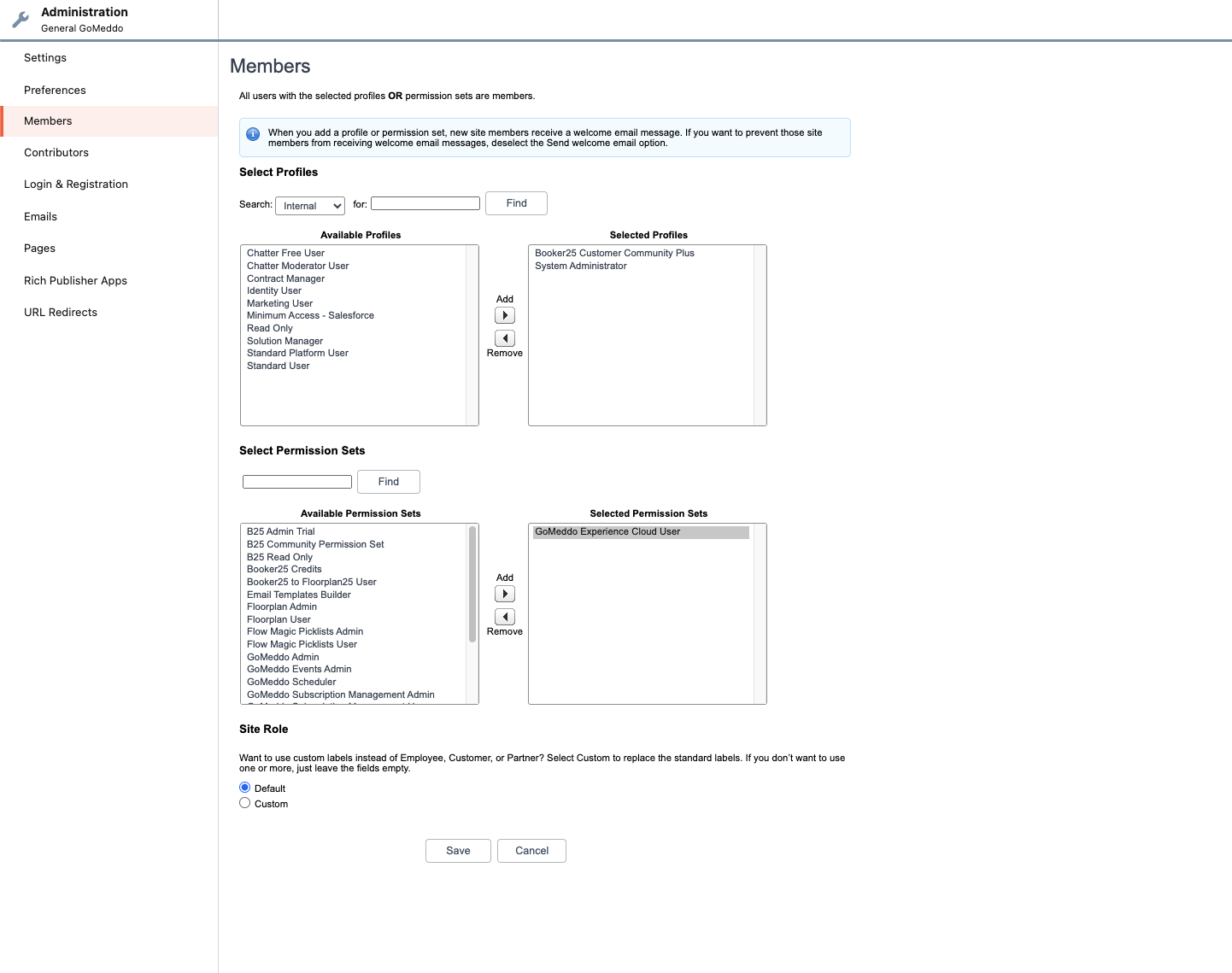GoMeddo Experience Cloud for authenticated users
This article describes the configuration steps and most strict Sharing Settings required for GoMeddo to function correctly in a Experience Cloud site which is used by authenticated users. Depending on what you want to show on the Experience Cloud site , you might need need to share more.
Keep in mind that GoMeddo is a native Salesforce application built with custom objects. This means you will need to follow Salesforce best practices around object sharing and permissions. This article tries to touch upon the most common requirements, but these may differ from what your use case needs.
1. Create Experience Cloud site
Create an Experience Cloud site.
2. Create and assign Permission set & License
Assign a GoMeddo license to you Experience Cloud users. You can skip this step on Sandbox orgs
Assign the GoMeddo Experience Cloud User permission set to your users
Make sure the relevant Profiles or Permission Sets have access to the Experience Cloud site via the site’s Administration > Members settings

3. Enabling sharing rules
Enable sharing rules:
Go to Setup
Go to Sharing Settings
Define a Based on criteria sharing rule for at least the following objects (this list will be longer if you use more GoMeddo functionality)
Availability
Calendar
Conflict
Dimension
GoMeddo Rules
Staff
Reservation
Reservation Color
Reservation Status
Reservation Type
Resource Type
Resource
View
These settings allow you to show you a very basic calendar to an Experience Cloud user and make a reservation. If you want to show more, you might need to add more sharing rules based on the specific you want to show.
4. Expose the calendar
If needed, follow this article to expose the calendar on your site.
5. Screen Flows
If needed, follow this article to give Experience Cloud users access to specific Screen Flows.
6. Done
Done! Authenticated users should now have access to your Experience Cloud site with GoMeddo functionality. Keep in mind that GoMeddo is a native Salesforce application built with custom objects. This means you will need to follow Salesforce best practices around object sharing and permissions. This article tries to touch upon the most common requirements, but these may differ from what your use case needs.
